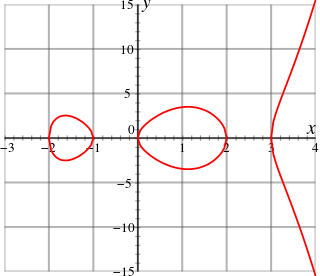Daniel Gray Quillen was an American mathematician. He is known for being the "prime architect" of higher algebraic K-theory, for which he was awarded the Cole Prize in 1975 and the Fields Medal in 1978.

Richard Dagobert Brauer was a leading German and American mathematician. He worked mainly in abstract algebra, but made important contributions to number theory. He was the founder of modular representation theory.
Modular representation theory is a branch of mathematics, and is the part of representation theory that studies linear representations of finite groups over a field K of positive characteristic p, necessarily a prime number. As well as having applications to group theory, modular representations arise naturally in other branches of mathematics, such as algebraic geometry, coding theory, combinatorics and number theory.

In mathematical group theory, the Schur multiplier or Schur multiplicator is the second homology group of a group G. It was introduced by Issai Schur in his work on projective representations.

In mathematics, arithmetic geometry is roughly the application of techniques from algebraic geometry to problems in number theory. Arithmetic geometry is centered around Diophantine geometry, the study of rational points of algebraic varieties.

In mathematics, the lattice of subgroups of a group is the lattice whose elements are the subgroups of , with the partial ordering being set inclusion. In this lattice, the join of two subgroups is the subgroup generated by their union, and the meet of two subgroups is their intersection.
In mathematics, in the area of abstract algebra known as group theory, an A-group is a type of group that is similar to abelian groups. The groups were first studied in the 1940s by Philip Hall, and are still studied today. A great deal is known about their structure.
In mathematics, especially in the field of group theory, a Carter subgroup of a finite group G is a self-normalizing subgroup of G that is nilpotent. These subgroups were introduced by Roger Carter, and marked the beginning of the post 1960 theory of solvable groups.
In mathematics, nilpotent orbits are generalizations of nilpotent matrices that play an important role in representation theory of real and complex semisimple Lie groups and semisimple Lie algebras.

James Alexander "Sandy" Green FRS was a mathematician and Professor at the Mathematics Institute at the University of Warwick, who worked in the field of representation theory.

In the area of modern algebra known as group theory, the Mathieu groupM11 is a sporadic simple group of order

In the area of modern algebra known as group theory, the Mathieu groupM12 is a sporadic simple group of order

In the area of modern algebra known as group theory, the Mathieu groupM23 is a sporadic simple group of order
In mathematics, especially in the area of abstract algebra known as module theory, a principal indecomposable module has many important relations to the study of a ring's modules, especially its simple modules, projective modules, and indecomposable modules.
Bhama Srinivasan is a mathematician known for her work in the representation theory of finite groups. Her contributions were honored with the 1990 Noether Lecture. She served as president of the Association for Women in Mathematics from 1981 to 1983.

Jonathan Lazare Alperin is an American mathematician specializing in the area of algebra known as group theory. He is notable for his work in group theory which has been cited over 500 times according to the Mathematical Reviews. The Alperin–Brauer–Gorenstein theorem is named after him.
In abstract algebra, the focal subgroup theorem describes the fusion of elements in a Sylow subgroup of a finite group. The focal subgroup theorem was introduced in and is the "first major application of the transfer" according to. The focal subgroup theorem relates the ideas of transfer and fusion such as described by Otto Grün in. Various applications of these ideas include local criteria for p-nilpotence and various non-simplicity criteria focussing on showing that a finite group has a normal subgroup of index p.
James Edward Humphreys was an American mathematician who worked in algebraic groups, Lie groups, and Lie algebras and applications of these mathematical structures. He is known as the author of several mathematical texts, such as Introduction to Lie Algebras and Representation Theory and Reflection Groups and Coxeter Groups.

Helene (Hel) Braun was a German mathematician who specialized in number theory and modular forms. Her autobiography, The Beginning of A Scientific Career, described her experience as a female scientist working in a male-dominated field at the time, in the Third Reich.

Gunter Malle is a German mathematician, specializing in group theory, representation theory of finite groups, and number theory.








